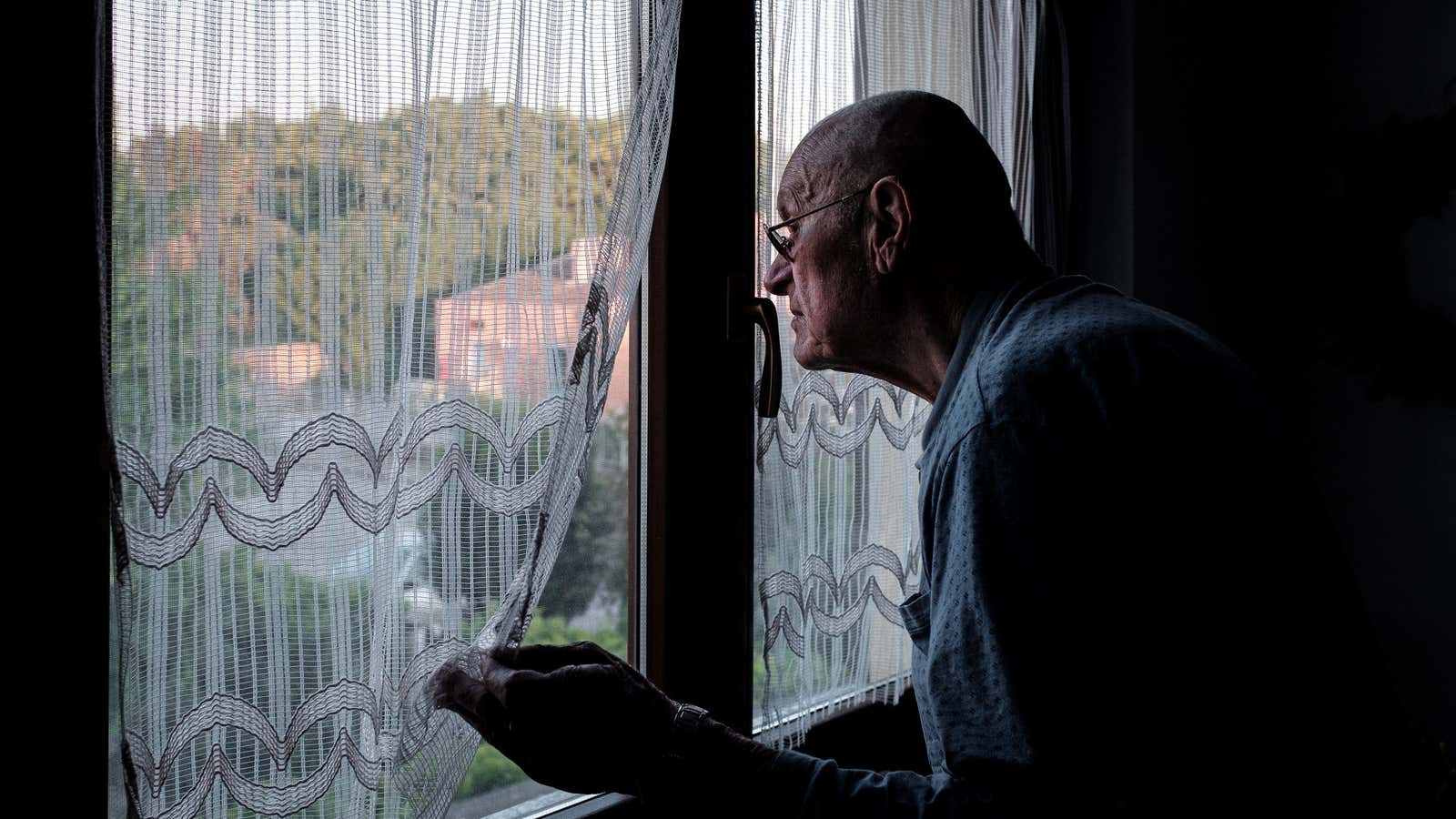Today, if you want an antibody test for SARS-CoV-2 in the US, you have to get it from a federally approved healthcare provider or research group (not, for example, a Cambridge, Massachusetts gastropub, which got shut down this week after offering the tests). Although some versions aren’t much more complicated than an at-home pregnancy test, the Food and Drug Administration has so far barred producers from selling them to the general public.
That restriction is likely to loosen eventually. In its guidance for test manufacturers, the FDA says it “is supportive of at-home testing for Covid-19, provided there is data and science to support consumer safety and test accuracy.” And some of the antibody tests already in wide use are easy to administer and deliver results within minutes: Prick your finger with a retractable needle, leave a drop of blood and some buffer solution on a strip of paper, and see whether a colored bar appears.
Still, administering the test is one thing. Interpreting its results is a lot more challenging, and could introduce new risks.
The FDA has already authorized two Covid-19 diagnostic tests for at-home sample collection; users can collect their own saliva or nose swabs and mail them to a lab, similar to a commercial genealogy test. But diagnostic test results are more straightforward than antibody test results; you either have viral genetic material, or you don’t. Even setting aside questions about the general accuracy of available antibody tests (which can still be dubious), as well as potentially high rates of false positives, scientists still know very little about what kind of immunity SARS-CoV-2 antibodies might confer. Without professional guidance, it could be easy for a non-expert to jump to the conclusion that they’re immune when they aren’t.
“What people do with the result may be based on some understanding of immunity or infection risk that may or may not be related to reality,” said Duane Wesemann, an immunologist at Harvard Medical School.
Now that tests are being authorized by the FDA, private companies and the National Institutes of Health are studying whether people are able to use an antibody test safely and effectively at home. One study, which uses the same Premier Biotech finger-prick test as recent serology surveys in California, isn’t meant to validate the test’s accuracy. Instead, it will focus on whether people understand how to use the test, and whether their reading of the result matches that of a physician.
Participants will also be asked about whether the test made them feel emboldened to do things (go into a crowded grocery store, for example) they wouldn’t otherwise do. Run by a group of New York-based health startups including research firm ProofPilot and concierge clinician Radish Health, the study won’t be completed for a couple of months.
Untrained people tend to be fairly good at using simple at-home medical tests. In 2018, research in the Lancet reviewed 25 studies of how well people use self-administered HIV tests (including blood and saliva versions) and found that users’ self-described results nearly always matched an expert’s reading, even without any guidance. Blood tests yielded invalid results more often than saliva tests, either because the user drew blood incorrectly, misapplied it, or misread the result.
“There’s still a question of ‘Can people handle this?'” said Viral Patel, a physician who is Radish’s CEO. “How does the test change their behavior after they take it?”
Wesemann, who is not involved in the trial, said studies like this are helpful. But, he said, “a key question is how good is the test itself? Another question is what the purpose of the testing is? My confidence in this is mainly around these points.”
Early data suggest that at-home tests may be less accurate than lab-based tests. A series of recent preprint papers indicate that saliva and self-performed nose swab samples—which, importantly, are more complex to administer than finger-prick antibody tests—were typically less effective at detecting the virus than swabs performed by a clinician, especially in the absence of professional guidance. But blood tests can have issues, too.
Steve Miller, director of the clinical microbiology lab at the University of California-San Francisco, cautioned that finger pricks, which tap shallow capillaries, can sometimes produce little or no serum, the part of blood that carries antibodies, compared to tests on blood drawn from a vein. “There’s a tendency with lateral flow [finger-prick] tests for their performance to be not quite as good,” he said. “But there’s just not a lot of data supporting them one way or another.”
Meanwhile, an additional benefit of in-clinic tests is that the results can be easily incorporated into large datasets, in the interest of answering urgent public health questions. Right now, there’s no system in place for individuals to anonymously log their results.
Ultimately, Wesemann said, if the tests are purely recreational, there’s probably not too much harm that can come from them. But if at-home tests results become the basis for re-entering the workforce or other consequential policy decisions, people might feel pressured to falsify their results.
“If there’s a lot that depends on the real accuracy of the result,” he said, “then this has big problems.”
